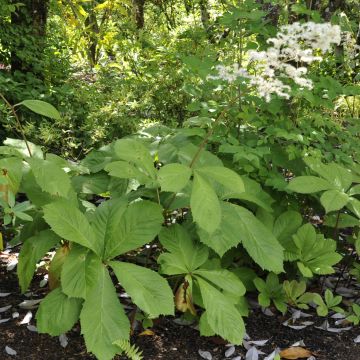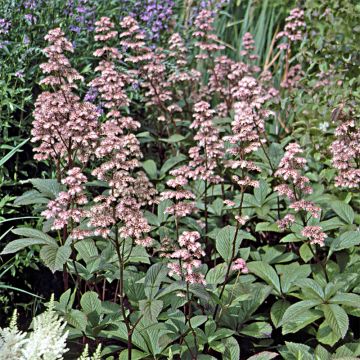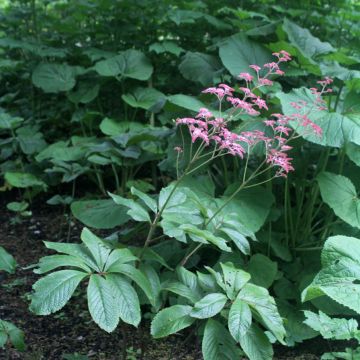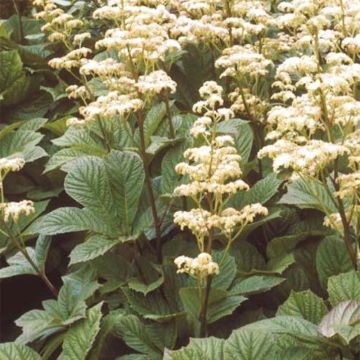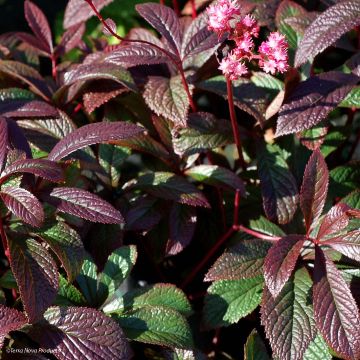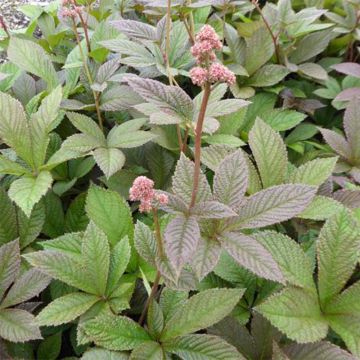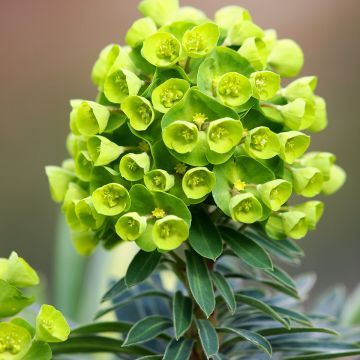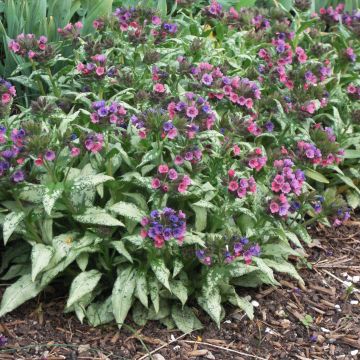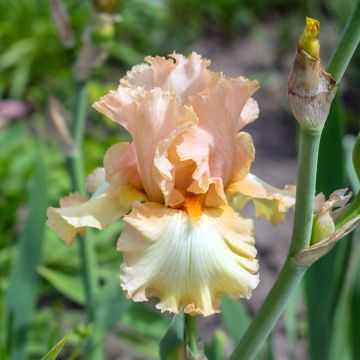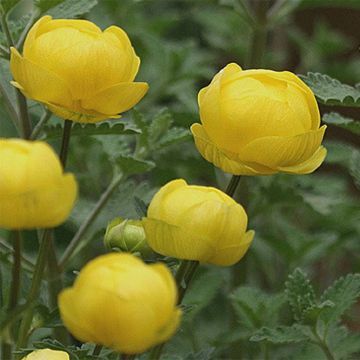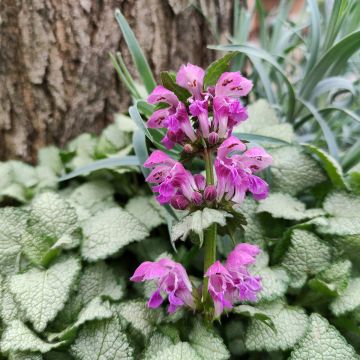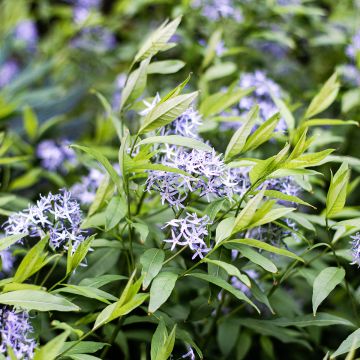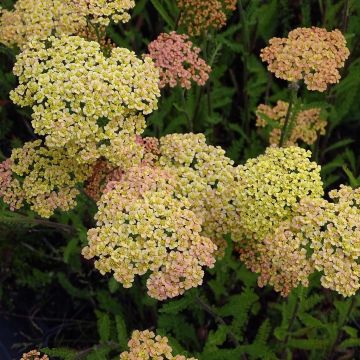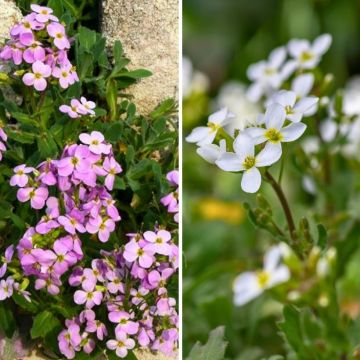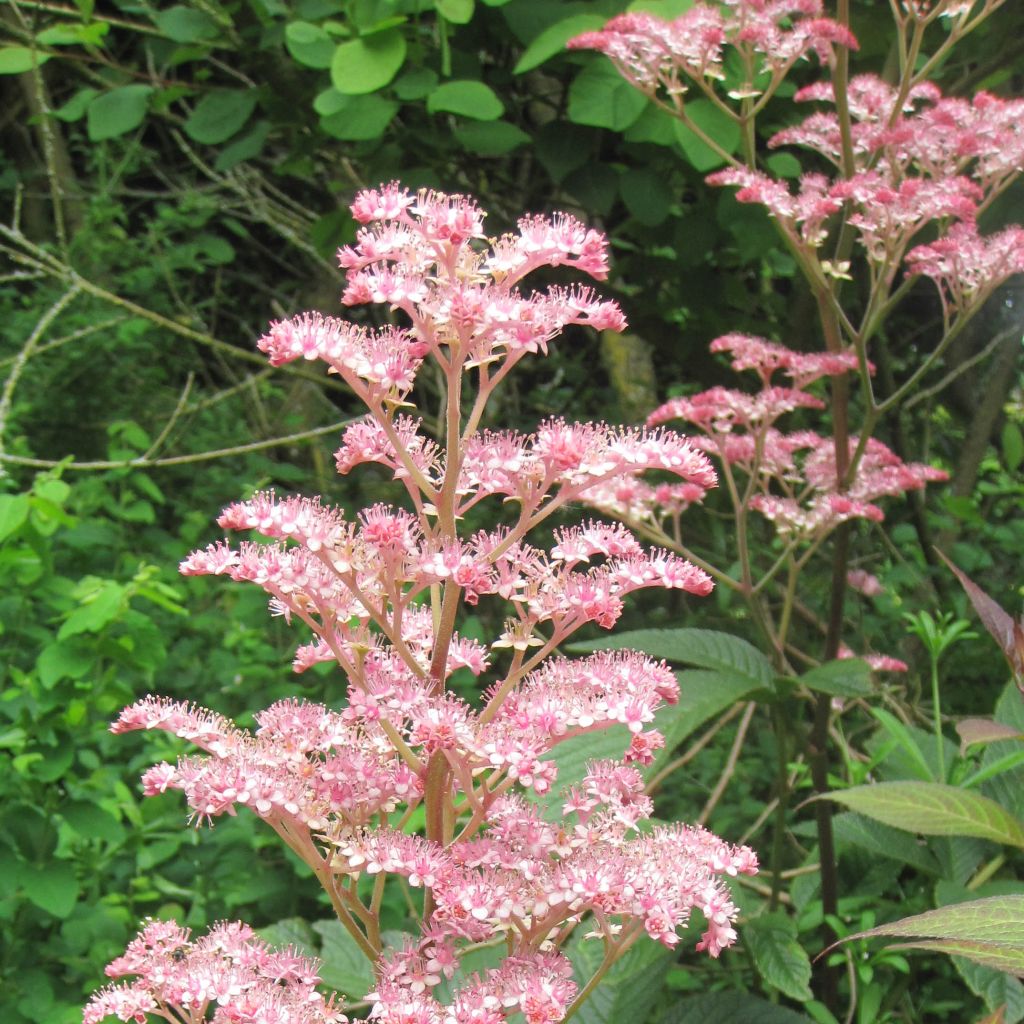

Rodgersia pinnata Chocolate Wings
Rodgersia pinnata Chocolate Wings
Rodgersia pinnata Chocolate Wings
Featherleaf Rodgersia
Arrived in good condition with lovely foliage. We are waiting for spring to assess its recovery.
Nadine, 23/10/2024
This item cannot be shipped to the selected country
Delivery charge from €5.90
Delivery charge from €5.90
More information
Schedule delivery date,
and select date in basket
This plant carries a 12 months recovery warranty
More information
We guarantee the quality of our plants for a full growing cycle, and will replace at our expense any plant that fails to recover under normal climatic and planting conditions.
From €5.90 for pickup delivery and €6.90 for home delivery
Express home delivery from €8.90.
From €5.90 for pickup delivery and €6.90 for home delivery
Express home delivery from €8.90.
Does this plant fit my garden?
Set up your Plantfit profile →
Description
Rodgersia pinnata 'Chocolate Wings' is a stunning perennial with a sumptuous architectural and bushy habit. It develops spreading palmate foliage of a chestnut colour, changing throughout the seasons. When it emerges, it is chocolate brown and evolves to green in early summer, culminating in bronze and then transitioning to deep red at the end of summer. With the arrival of autumn and the first frost, the chocolate brown pigmentation reappears. It produces pale-pink then burgundy-red flowers in summer. It is a superb perennial for wet and shady locations.
Rodgersia pinnata is a Chinese species belonging to the Saxifragaceae family. From its fleshy rhizome emerges a clump of large pinnate leaves, reaching a height of 1m (3ft) and a width of 60cm (24in). The clumps slowly spread to form stumps of over 1m² over time. The foliage of this perennial is distinguished by its resemblance to chestnut leaves. The leaves can reach a length of 90cm (35in) and are divided into 4 to 8 lanceolate, wrinkled, deeply veined leaflets, arranged opposite each other, with a terminal leaflet. What distinguishes the 'Chocolate Wings' cultivar is the changing hues of its foliage throughout the seasons. It goes from chocolate to green, bronze, and dark red before turning chocolate again and falling in winter. It chooses mid-summer to flower, sending up its large paniculate inflorescences with red stems, measuring 30 to 70cm (12 to 28in), adorned with pale-pink and then purple flowers.
Rodgersia pinnata 'Chocolate Wings' is a plant for shade and moist soils. It is ideal near water features, in the company of ferns, grasses, and astilbes, or along the edge of moist woodlands with tiarellas and heucheras. It can tolerate drier conditions, as long as it is planted in the shade. Plant it in groups to cover the ground along a shaded pathway, or as a solitary specimen, highlighted by a carpet of golden sagina and the blue flowers of liverworts.
Report an error about the product description
Rodgersia pinnata Chocolate Wings in pictures
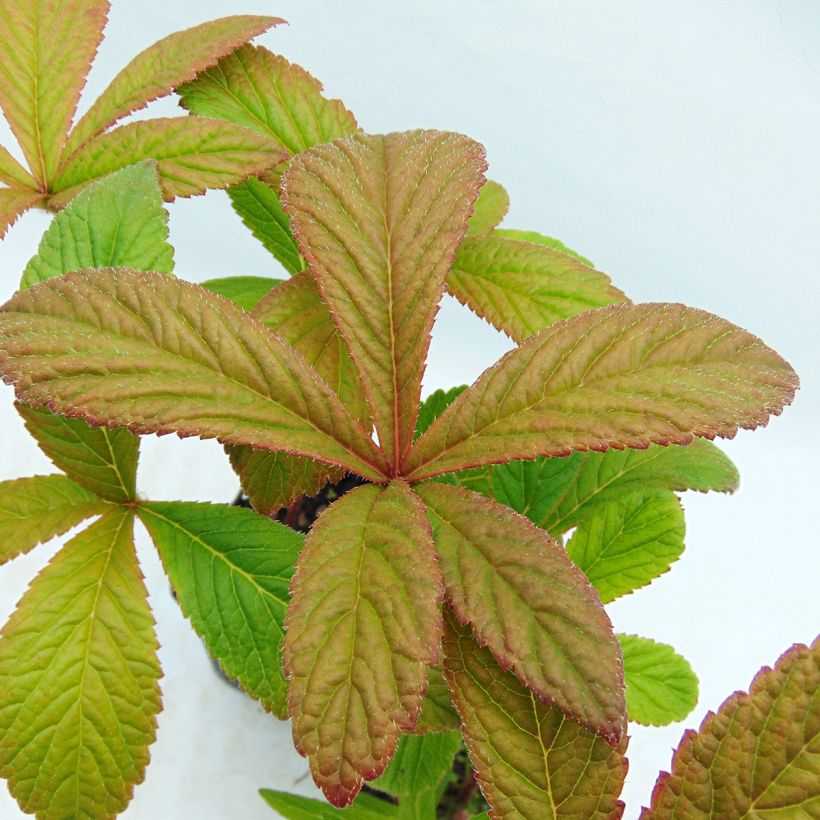

Flowering
Foliage
Plant habit
Botanical data
Rodgersia
pinnata
Chocolate Wings
Saxifragaceae
Featherleaf Rodgersia
Cultivar or hybrid
Other Rodgersia
Planting and care
Plant in moist to even wet and rich soil: typically, woodland humus, acidic or neutral soil (avoid planting in limestone areas). Ideally, plant in partial shade (occasionally in the sun in an area that remains moist in summer), with plantings spaced apart. At maturity, it reaches a width of 1m². Protect it from strong winds and direct sunlight, which can damage its foliage.
Planting period
Intended location
Care
-
, onOrder confirmed
Reply from on Promesse de fleurs
Spring flowering perennials
Haven't found what you were looking for?
Hardiness is the lowest winter temperature a plant can endure without suffering serious damage or even dying. However, hardiness is affected by location (a sheltered area, such as a patio), protection (winter cover) and soil type (hardiness is improved by well-drained soil).

Photo Sharing Terms & Conditions
In order to encourage gardeners to interact and share their experiences, Promesse de fleurs offers various media enabling content to be uploaded onto its Site - in particular via the ‘Photo sharing’ module.
The User agrees to refrain from:
- Posting any content that is illegal, prejudicial, insulting, racist, inciteful to hatred, revisionist, contrary to public decency, that infringes on privacy or on the privacy rights of third parties, in particular the publicity rights of persons and goods, intellectual property rights, or the right to privacy.
- Submitting content on behalf of a third party;
- Impersonate the identity of a third party and/or publish any personal information about a third party;
In general, the User undertakes to refrain from any unethical behaviour.
All Content (in particular text, comments, files, images, photos, videos, creative works, etc.), which may be subject to property or intellectual property rights, image or other private rights, shall remain the property of the User, subject to the limited rights granted by the terms of the licence granted by Promesse de fleurs as stated below. Users are at liberty to publish or not to publish such Content on the Site, notably via the ‘Photo Sharing’ facility, and accept that this Content shall be made public and freely accessible, notably on the Internet.
Users further acknowledge, undertake to have ,and guarantee that they hold all necessary rights and permissions to publish such material on the Site, in particular with regard to the legislation in force pertaining to any privacy, property, intellectual property, image, or contractual rights, or rights of any other nature. By publishing such Content on the Site, Users acknowledge accepting full liability as publishers of the Content within the meaning of the law, and grant Promesse de fleurs, free of charge, an inclusive, worldwide licence for the said Content for the entire duration of its publication, including all reproduction, representation, up/downloading, displaying, performing, transmission, and storage rights.
Users also grant permission for their name to be linked to the Content and accept that this link may not always be made available.
By engaging in posting material, Users consent to their Content becoming automatically accessible on the Internet, in particular on other sites and/or blogs and/or web pages of the Promesse de fleurs site, including in particular social pages and the Promesse de fleurs catalogue.
Users may secure the removal of entrusted content free of charge by issuing a simple request via our contact form.
The flowering period indicated on our website applies to countries and regions located in USDA zone 8 (France, the United Kingdom, Ireland, the Netherlands, etc.)
It will vary according to where you live:
- In zones 9 to 10 (Italy, Spain, Greece, etc.), flowering will occur about 2 to 4 weeks earlier.
- In zones 6 to 7 (Germany, Poland, Slovenia, and lower mountainous regions), flowering will be delayed by 2 to 3 weeks.
- In zone 5 (Central Europe, Scandinavia), blooming will be delayed by 3 to 5 weeks.
In temperate climates, pruning of spring-flowering shrubs (forsythia, spireas, etc.) should be done just after flowering.
Pruning of summer-flowering shrubs (Indian Lilac, Perovskia, etc.) can be done in winter or spring.
In cold regions as well as with frost-sensitive plants, avoid pruning too early when severe frosts may still occur.
The planting period indicated on our website applies to countries and regions located in USDA zone 8 (France, United Kingdom, Ireland, Netherlands).
It will vary according to where you live:
- In Mediterranean zones (Marseille, Madrid, Milan, etc.), autumn and winter are the best planting periods.
- In continental zones (Strasbourg, Munich, Vienna, etc.), delay planting by 2 to 3 weeks in spring and bring it forward by 2 to 4 weeks in autumn.
- In mountainous regions (the Alps, Pyrenees, Carpathians, etc.), it is best to plant in late spring (May-June) or late summer (August-September).
The harvesting period indicated on our website applies to countries and regions in USDA zone 8 (France, England, Ireland, the Netherlands).
In colder areas (Scandinavia, Poland, Austria...) fruit and vegetable harvests are likely to be delayed by 3-4 weeks.
In warmer areas (Italy, Spain, Greece, etc.), harvesting will probably take place earlier, depending on weather conditions.
The sowing periods indicated on our website apply to countries and regions within USDA Zone 8 (France, UK, Ireland, Netherlands).
In colder areas (Scandinavia, Poland, Austria...), delay any outdoor sowing by 3-4 weeks, or sow under glass.
In warmer climes (Italy, Spain, Greece, etc.), bring outdoor sowing forward by a few weeks.

































